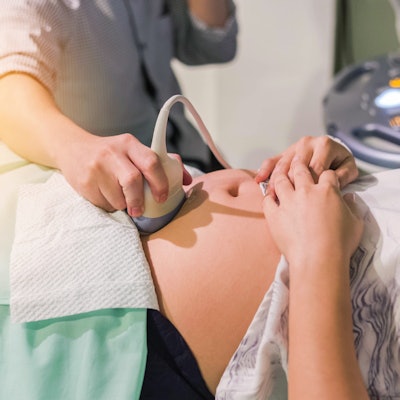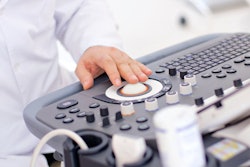
Hysterosalpingo contrast sonography (HyCoSy) is potentially safer and more efficient in examining fallopian tubes in women undergoing infertility exams, according to research presented Monday at the 2021 virtual annual meeting of the American Roentgen Ray Society (ARRS).
The research, presented by Dr. Shuchi Rodgers from the Einstein Medical Center in Philadelphia, showed that a complete infertility ultrasound exam with HyCoSy visualizes intra- and extrauterine pathologies and tubal patency in one setting without ionizing radiation, as opposed to other examination methods, such as hysterosalpingography (HSG).
"HyCoSy with a microbubble contrast shows promise and may obviate the need for HSG, particularly in straightforward cases," Rodgers said. "In a majority of cases not studied with HSG, free spill was obvious and imaging was straightforward, so HSG was not considered necessary."
The causes of infertility in women are multiple, including genetic, tubal, and partner-related issues. Impaired tubal patency accounts for 30% to 35% of these cases, according to the National Survey of Family Growth (2015-2017).
The American College of Obstetricians and Gynecologists recommends HSG and HyCoSy in evaluating tubal patency. While HSG is more commonly performed and is widely available, it involves ionizing radiation, albeit in low doses.
In her talk at ARRS 2021, Rodgers described a single-center, retrospective study of 28 female patients between December 2018 and April 2020. Rodgers and her team found 17 women had a normal Hysterosalpingo contrast sonography exam and were not recommended for HSG. Another four patients had an abnormal HyCoSy, but they did not undergo an HSG within four weeks.
However, seven more patients underwent both methods. Out of the 13 fallopian tubes examined in these patients, nine were obstructed, with one false positive and three true negatives.
| Performance of HyCoSy with HSG as reference standard | |
| Sensitivity | 100% |
| Specificity | 75% |
| Positive Predictive Value | 90% |
| Negative Predictive Value | 100% |
| Accuracy | 92.3% |
The women were an average age of 32 years old and underwent HyCoSy as a part of a complete infertility evaluation with transvaginal ultrasound and saline infusion sonohysterography (SIS).
Rodgers listed several advantages of the HyCoSy microbubble contrast in her presentation, including high sensitivity and accuracy for diagnosing fallopian tube patency and real-time visualization of the entire fallopian tube.
"Most importantly, we were able to immediately follow pelvic ultrasound and SIS on the same day, as opposed to HSG, which often occurs on a different day," she said.
Some challenges to using this method include only being able to examine one fallopian tube at a time unless 3D or 4D imaging is used, learning curve, and the extra expense of the contrast.
"Future directions will include the use of 3D and 4D HyCoSy where we can evaluate both fallopian tubes at one time, and transabdominal HyCoSy," Rodgers said.




















